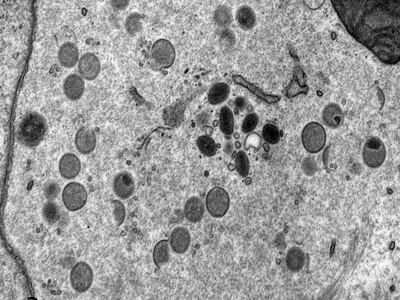Explaining Science beyond the Lab: My PhD Explained
I spent the past 4 years doing research for my PhD at the University of Cambridge. I worked on a unique way to fight cancer - using viruses. At the end of my time in the lab, I wrote up a 60,000 word thesis to summarise everything I had done, explain how I had done it, and why it mattered. I really enjoyed this part: analysing all of my data, presenting my findings, and discussing how it fits in with other people's work. In the end though, my thesis is a book that very few people will read, let alone understand, because it wasn't written for them. And this is a shame because I believe that a lot of people would like to know about this project - not least my mother!
Explaining my research and what I was up to was a large part of my PhD, and was one of the most rewarding aspects. I did all kinds of explaining throughout my PhD. This ranged from me explaining what I was doing to my family, speaking with specialists at international conferences, chatting to school children at outreach events, and of course writing and defending my thesis to expert examiners.

When it came down to it, explaining myself well was arguably the core of my success in research. And because I strongly believe that research has no value if not shared, I wanted to share my research with you too. So here it is, a complete explanation of my 4 years of research about how we can make viruses work for us to treat cancer.
What is Cancer and Why is It So Hard to Treat?
Cancer is a disease that occurs when normal cells stop co-operating and listening to the rules of the body. They stop carrying out the function they are needed for, survive and grow when they shouldn’t, and disrupt normal organ function. Cancer cells or tumours that progress to cause health issues do so by avoiding cells in the body which aim to destroy them. These protective cells work as part of the immune system. A tumour's ability to avoid the immune system can lead to cancer progression and, if left untreated, may be fatal.
How Can Viruses Help Fight Cancer?
New cancer treatments called immunotherapies try to overcome the ability of cancer cells to trick or hide from the immune system. Immunotherapies aim to boost the ability of immune system cells to destroy tumours. One promising new treatment for this purpose uses viruses, called oncolytic viruses, to infect cancer cells and alert the body to the presence of tumours. In principle, oncolytic viruses can kill cancer cells without harming normal cells, and they can alert the immune system to a previously hidden cancer by causing an infection. In clinic, oncolytic viruses show promising effects, however, they are not working as well in patients as they could be, and we currently don’t fully understand why.
What My Research Explored
My research aimed to understand why oncolytic viruses aren’t eliminating cancer effectively and to explore solutions. For this study, we chose an oncolytic virus, called vaccinia virus, that we understand the characteristics of quite well. Limited information existed on how this virus functioned in cancer, so we aimed to expand this knowledge and explore ways to enhance its anti-cancer effects.
Key Findings: What We Discovered About Oncolytic Viruses
- We tested how exactly vaccinia virus kills some example cancer cells in the lab setting. We identified how precisely infection caused cancer cells to die. This added clarity to and provided explanation of some previous research in the field.
- We identified a gene that vaccinia virus has which might be limiting its ability to eliminate cancer in patients. We removed this gene from the virus and showed that its removal increased the ability of vaccinia virus to kill cancer cells in the lab. Further research will investigate how precisely this gene works.
- We tested whether we could boost killing by using the virus along with some other drugs that block functions within the cancer cells. We chose drugs that normal cells are not harmed by, but that cancer cells are particularly vulnerable to. We used the virus and the different drug combinations in cancer cells that we knew the genetics of and found that selecting certain combinations worked to increase cancer cell death.
These findings open the door to potential new treatments that could make cancer therapies more effective. More research is needed, but this work moves us one step closer to harnessing viruses to fight cancer.
Science Continues And So Do I
I hope this post has given you a clearer picture of the work I was doing during my PhD and the exciting research happening in this field. Cancer research is constantly evolving, and oncolytic viruses represent a promising treatment option. I hope to see this field continue advancing as I transition away from the lab bench. There’s still so much to learn, and I encourage you to stay curious. If you're interested in learning more, I’ve shared some great articles on these topics. And who knows, you might have more to read from me soon!
Further reading
- For general cancer information, check out the CRUK website: https://www.cancerresearchuk.org/about-cancer/cancer-in-general
- To find out more about immunotherapy: https://www.cancer.gov/about-cancer/treatment/types/immunotherapy
- More about oncolytic viruses and the challenges of these therapies: https://news.cancerresearchuk.org/
